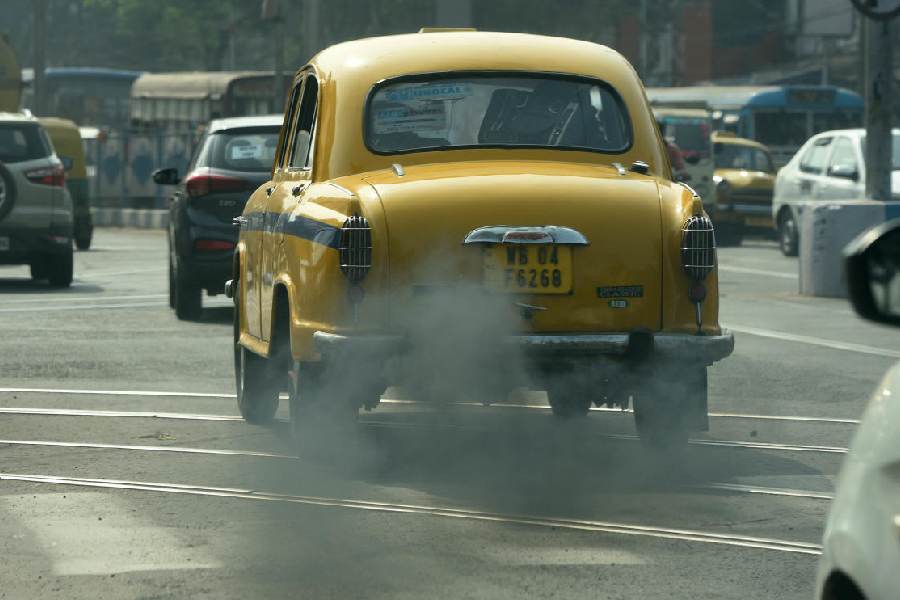Dust, industrial and vehicular emissions over Calcutta have declined over the past eight years, improving the city’s winter air quality, but pollution from coal, firewood and solid waste fires remains almost unchanged, a study has suggested.
Scientists at the Bose Institute, Calcutta, who analysed chemical fingerprints of pollutants over the city have documented declines of 39 per cent in industrial emissions, 33 per cent in vehicular emissions and 42 per cent in dust emissions since 2016.
Under these declines, average concentrations of particulate matter smaller than 2.5 microns (PM2.5) over the city have reduced from 173 micrograms per cubic metre between 2016-2019 to 125 micrograms per cubic metre between 2021-2023.
PM2.5 particles can penetrate deep into the lungs, with some capable of slipping even into the bloodstream. Prolonged exposure to high PM2.5 enhances the risk of premature deaths through exacerbations of respiratory and other health disorders.
The Bose Institute study has, however, now revealed that even under declining PM2.5 concentrations, the oxidative potential — the particles’ capacity to inflict biological damage to cells and tissues — remains high beyond a threshold of about 70 micrograms per cubic metre.
Beyond this threshold, the oxidative potential rises sharply with increasing PM2.5 concentrations. The findings imply that the PM2.5 concentration of 70 micrograms per cubic metre should be viewed as the threshold “cut-off” for Calcutta during winters.
The Union environment ministry’s National Ambient Air Quality Standards (NAAQS) set the PM2.5 threshold at 60 micrograms per cubic metres. Pollution control authorities use PM2.5 and other factors to calculate air quality index (AQI), labelling pollution levels as “moderate”, “poor” or “severe”.
“For Calcutta, a PM2.5 load higher than 70 micrograms per cubic metre is a matter of serious concern irrespective of the overall AQI,” Abhijit Chatterjee, professor of chemical sciences at Bose Institute, and research scholars Abhinandan Ghosh and Monami Dutta said in their study.
The study has just been published in the journal Science of the Total Environment.
The scientists have attributed the PM2.5 decline to the National Clean Air Programme launched by the environment ministry in 2019 to improve air quality in 131 cities across the country through surveillance and myriad actions to reduce dust, industrial and vehicular emissions.
Their analysis found no change in emissions from coal, biomass and solid waste burning.
Sections of food outlets, street-side shanties and hawkers use coal as fuel, while underprivileged households, possibly unable to afford cooking gas refills, continue to use wood, dry leaves, or other biomass for cooking and warmth in winter. Such practices appear to have remained “beyond surveillance”, the scientists said in their paper.
Between 2016-2019, 9 per cent to 13 per cent of Calcutta’s winter days had PM2.5 loads exceeding 300 micrograms per cubic metre, or five-fold the NAAQS cut-off. But the city did not record a single day with PM2.5 concentrations exceeding that level between 2021-2023.
An independent 10-city study led by a research group in New Delhi had earlier this year indicated that air pollution is contributing to excess premature deaths even at average annual PM2.5 concentrations below the NAAQS threshold of 60 micrograms per cubic metre.










